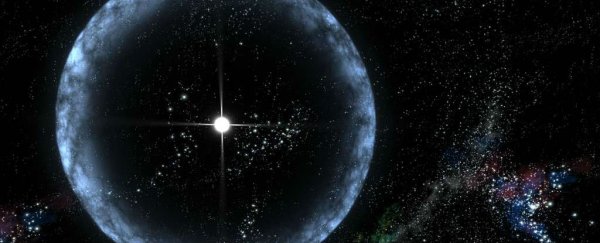Scientists have been searching for the origin of some of the most precious metals on Earth - including gold, silver, and platinum - for almost six decades. And now we might finally have the answer.
Heavy, and often valuable elements like these are called r-process elements, and they require an incredible amount of energy to produce. So far, no one's been able to explain how they came to exist in the Universe.
But the discovery that an ancient dwarf galaxy called Reticulum II - about 98,000 light-years from Earth - has stars that contain a "whopping" amount of these metals could finally bring an end to this mystery.
"Understanding how heavy, r-process elements are formed is one of hardest problems in nuclear physics," said one of the team, physicist Anna Frebel from MIT.
"The production of these really heavy elements takes so much energy that it's nearly impossible to make them experimentally. The process for making them just doesn't work on Earth. So we have had to use the stars and the objects in the cosmos as our lab."
Discovered just last year, the tiny Reticulum II galaxy is orbiting our own Milky Way, and is one of the closest dwarf galaxies ever found. It's considered one of the best candidates for detecting the famously elusive dark matter, and now it also looks like the best place for us to figure out how some of our favourite elements originated in the Universe.
By analysing the starlight from several of the brightest stars in the Reticulum II galaxy using the Magellan telescopes at the Las Campanas Observatory in Chile, Frebel and her team determined that they contained massive amounts of r-process elements. But here's the thing - there's no way they could have produced them on their own.
"When we read off the r-process content of that first star in our telescope, it just looked wrong, like it could not have come out of this galaxy!" said one of the team, graduate student Alexander Ji. "I spent a long time making sure the telescope was pointed at the right star."
The name r-process comes from the system scientists think is used to create elements like gold, uranium, and lead, called rapid neutron-capture.
Back in 1957, physicists Hans Suess and Harold Urey demonstrated that some kind of rapid capture of neutrons was needed to originally forge these elements, and suggested that somewhere in the Universe, a place filled with extreme conditions and crazy amounts of neutrons is where these elements came to be.
They hypothesised that giant star explosions and rare merges of neutrons stars - the densest stars in our Universe - were the most likely scenarios for this to take place, but they had no proof, so the origins of r-process elements remained a mystery.
Knowing that neutron star collisions are common in the very early stages of dwarf galaxies such as Reticulum II - which is now loaded with r-process elements as a result - the team says this provides further evidence that Suess and Urey were right.
The results have been published in Nature.
"Their study is indeed a smoking gun that exotic neutron star mergers were occurring very early in the history of this particular dwarf galaxy, and for that matter, likely in many other small galaxies," astronomer Enrico Ramirez-Ruiz from the University of California, Santa Cruz, who wasn't involved in the research, said at a roundtable discussion of the results last week.
"Neutron star mergers are therefore probably responsible for the bulk of the precious substances we call r-process elements throughout the Universe."
So how did all the gold, silver, uranium, lead, platinum, and other r-process elements end up on Earth? The team thinks they were created in dwarf galaxy neutron star explosions, got embedded into stars and asteroids at the time, and then transported all the way to our planet.
"Something to think about is that all the gold originally here on Earth sank into the planet's centre because the early Earth was molten," said Ramirez-Ruiz. "So all the gold we have today on or near the surface is from asteroid impacts."
"As we've been saying, the gold wasn't made in the asteroids, it was probably made in a neutron star merger," Frebel adds. "It then mixed into the cloud of gas and dust in which all the asteroids and planets formed. That gold was then transported to us on Earth as a special delivery."
What's crazy is that these star mergers were actually extremely rare in the early Universe, which means much of the gold atoms, for example, likely came from the same collisions.
"Because just one of these neutron star mergers produced so much gold, probably all of the gold atoms that are in the four of us in this roundtable discussion came from the same event," said Ramirez-Ruiz. "So we're not only linked by genetics, but by these exotic phenomena that happen in the Universe."
So not only are we all made of stars, we all contain precious metals born from the same cosmic collisions that happened billions of years ago, the results of which somehow made it into our own cells today. Go hug your nearest pet, because that is freaking awesome.
